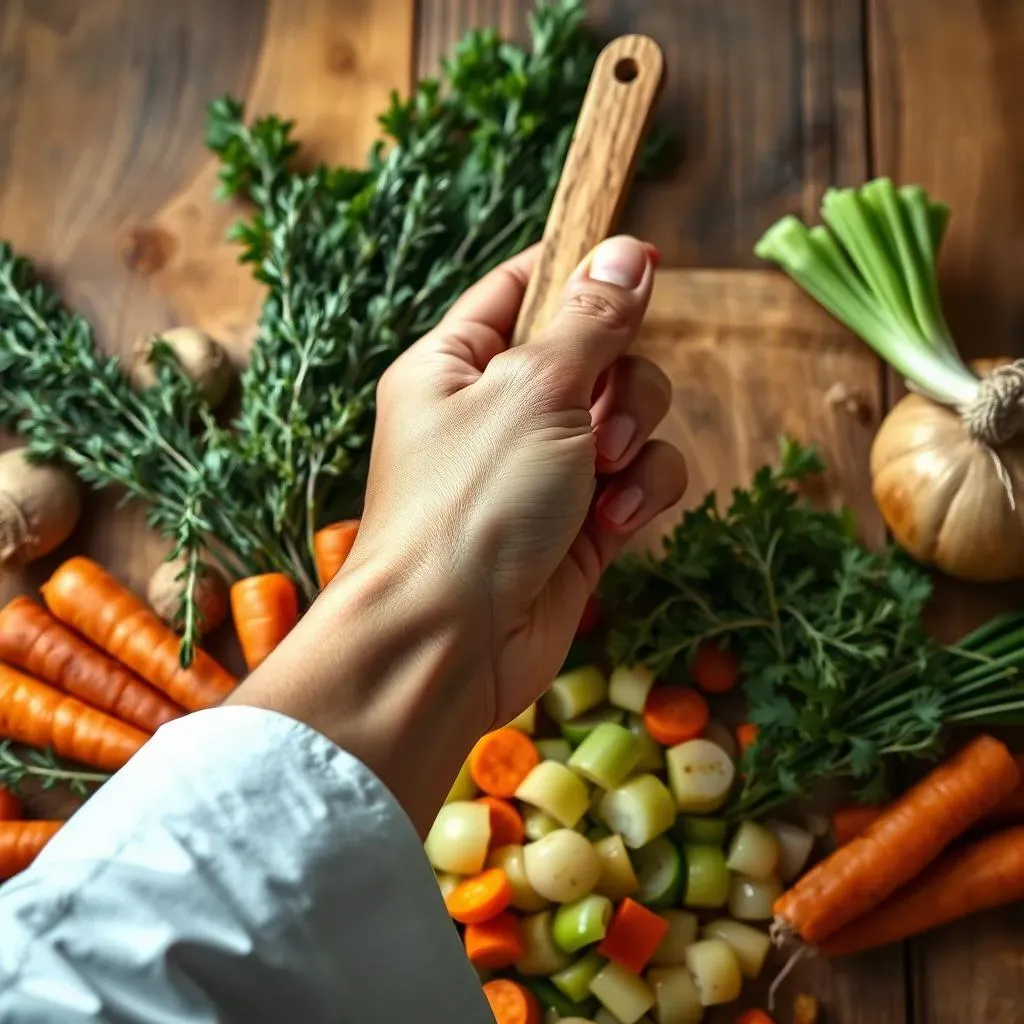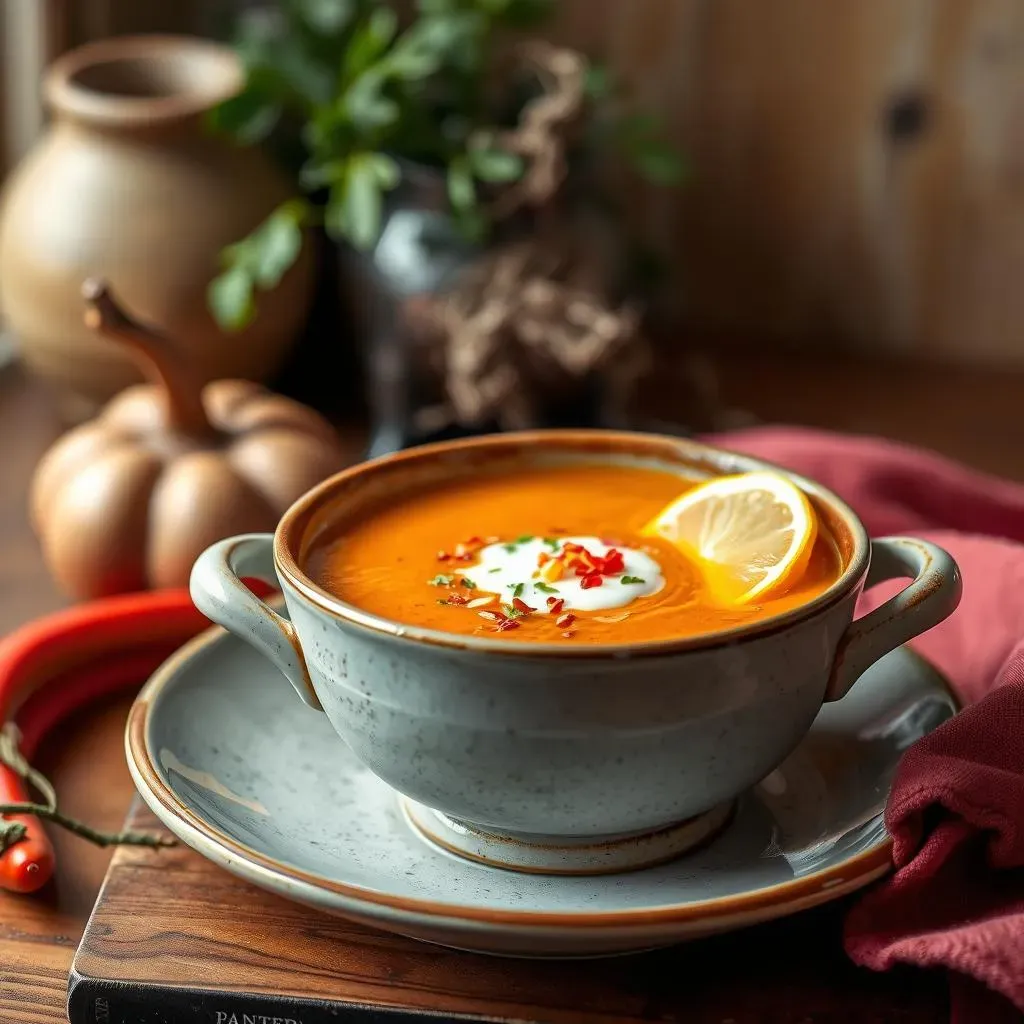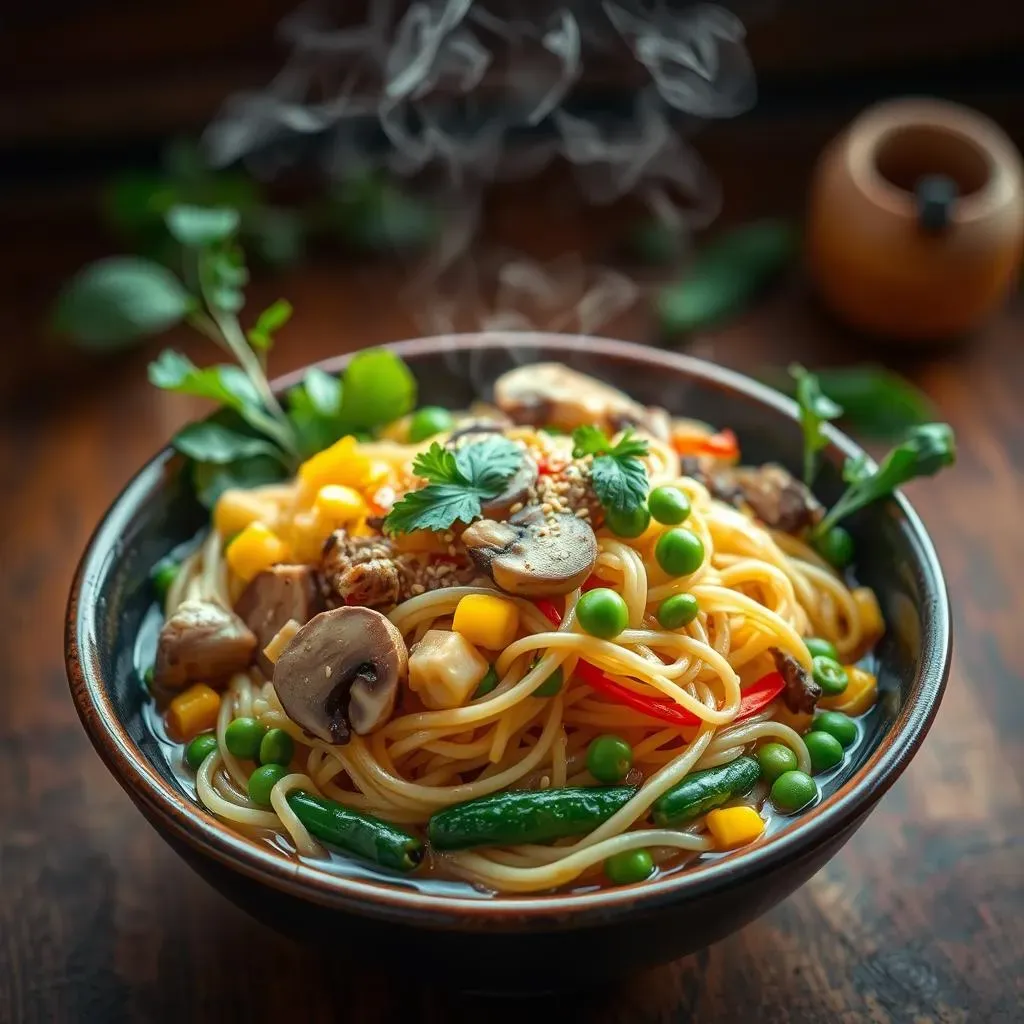Table of Contents
Ever stared into a bowl of chicken noodle soup, feeling like it's missing... something? You're not alone. That bland, one-note flavor is a common kitchen woe. But fear not, because mastering how to balance flavors in chicken noodle soup isn't some culinary magic trick. It's all about understanding the interplay of ingredients. We're about to embark on a journey to transform your soup from meh to marvelous. First, we’ll explore how a simple mirepoix and the right herbs can build a solid flavor foundation. Then, we’ll crank things up with zesty acids, a touch of heat, and creamy textures to add depth and complexity. Finally, we'll get adventurous with different noodles, veggies, and even global influences to make your soup a true flavor experience. So, grab your ladle, and let’s get cooking!
Balancing the Base: Mirepoix and Herbs

Balancing the Base: Mirepoix and Herbs
The Magic of Mirepoix
Okay, so you want your chicken noodle soup to taste like it’s been simmering for hours, right? Well, the secret isn't actually hours of simmering, it’s all about the base: mirepoix. Think of it as the holy trinity of flavor—carrots, celery, and onions—all chopped up and sautéed until they're nice and soft. I know, it sounds super basic, but this combo creates a sweet, savory foundation that's essential for a rich broth. Seriously, don't skip this step. It's like the difference between a plain white tee and a perfectly tailored shirt.
When I first started making soup, I’d just throw everything into the pot. My soup tasted…fine. Then my grandma told me about mirepoix. Suddenly, it was like my soup had found its voice. The aroma alone as it cooks is a game changer.
Herb Power: Fresh is Best
Now that you’ve got your mirepoix going, let's talk herbs. Dried herbs are okay in a pinch, but fresh herbs? They’re like the fireworks show at the end of a great day. Thyme, rosemary, and parsley are your go-to’s for classic chicken noodle soup. They add these bright, earthy notes that just make everything taste…well, like it's supposed to. Don't be shy either, a generous handful will make all the difference.
I remember this one time I used dried herbs because I was out of fresh ones. The soup was okay, but it lacked that certain *zing*. Lesson learned: fresh herbs are worth the extra trip to the store.
Herb | Flavor Profile | Best Use |
|---|---|---|
Thyme | Earthy, slightly lemony | Early in cooking, long simmer |
Rosemary | Piney, robust | Use sparingly, early in cooking |
Parsley | Fresh, grassy | Stir in at the end, for brightness |
Timing is Everything
The key with herbs is when you add them. Throwing them in too early can dull their flavor, like overcooking vegetables. I like to add the thyme and rosemary with the mirepoix to let their flavors infuse the broth. Then, I stir in the parsley at the very end to keep it bright and vibrant. It’s like adding the finishing touches to a painting. It's all about layering those flavors. It’s this simple step that really elevates your soup from good to great.
Don't worry about being overly precise, it's not rocket science. Just don’t add all the herbs at once, and you’ll be golden.
Adding Zest: Acid, Heat, and Creaminess

Adding Zest: Acid, Heat, and Creaminess
The Zing of Acid
Alright, so your soup has a solid base, but it's still a bit...flat? Time to introduce some acid! A squeeze of lemon juice can be a total game-changer. It’s like waking up your taste buds, adding a brightness that cuts through the richness of the broth. Don't be scared, a little goes a long way. Start with a teaspoon and add more to taste. Lime juice works great too, especially if you're feeling a bit adventurous. It's amazing how such a simple addition can make your soup taste so much more alive.
I remember one time, my soup tasted like it was missing a spark. I added a bit of lemon juice on a whim, and boom! It was like the soup had suddenly found its purpose. It’s this simple tweak that really makes all the difference. It's like adding a splash of color to a black and white photo.
Spice it Up: Adding Heat
Now, if you're like me and you like a little kick, let’s talk heat. A pinch of red pepper flakes or a dash of hot sauce can transform your chicken noodle soup from comforting to downright exciting. Start small, though, you can always add more. You want to enhance the flavors, not overpower them. For a milder heat, try a finely chopped chili pepper. It adds a nice warmth without burning your mouth. It’s like adding a little adventure to your bowl.
One time, I added way too much hot sauce to my soup. My eyes were watering, and I couldn’t taste anything else! Lesson learned: start with a tiny amount, and add more gradually. It's all about finding that perfect balance, not setting your mouth on fire.
Heat Source | Heat Level | Best Use |
|---|---|---|
Red Pepper Flakes | Medium | Add while simmering for infused heat |
Hot Sauce | Variable | Add at the end, to taste |
Chili Pepper | Medium to Hot | Add while simmering for a fresh heat |
Creamy Comfort
Finally, if you’re craving a richer, more decadent soup, let's talk creamy textures. A splash of milk, a pat of butter, or a swirl of heavy cream can add that velvety smoothness. If you’re dairy-free, don't worry, coconut milk or a spoonful of tahini works just as well. It adds a luxurious mouthfeel that makes your soup feel extra comforting. It’s like wrapping yourself in a warm blanket on a cold day.
I used to be afraid of adding cream to soup, thinking it would make it too heavy. But then I tried it, and it was like a whole new world of deliciousness opened up. Just be careful not to add too much, or your soup might turn into a chowder.
Beyond the Basics: Noodles, Veggies, and Global Flavors

Beyond the Basics: Noodles, Veggies, and Global Flavors
Noodle Nirvana
Okay, so you’ve got your flavor base down, but let’s be real, the noodles are kind of a big deal, too. Forget those boring egg noodles for a second. Have you ever tried rice noodles? They add this delicate, almost silky texture that’s just delightful. Or maybe you're feeling a bit more adventurous? Ramen noodles bring a nice chewiness to the party. And don't even get me started on soba noodles, they have this nutty flavor that’s just perfect for a more earthy soup. It’s like swapping out your usual sneakers for a stylish pair of boots, it can change the whole vibe of your meal.
I remember the first time I used ramen noodles in my chicken soup. It was a total accident, I was out of egg noodles, and it was a game changer! The soup was transformed, it was fun, it was exciting, and it made me look at chicken noodle soup in a whole different light.
Veggie Variety
Now, let's talk about veggies. Sure, carrots and celery are classic, but who says you have to stop there? Mushrooms add a lovely umami flavor, while sweet corn brings a pop of sweetness. And don't forget about peas; they add a burst of freshness. You could even toss in some chopped tomatoes for a bit of acidity. It’s like adding different colors to a painting, each one brings its own unique touch. The best part is, you can use whatever veggies you like, it's a great way to use up whatever you have in your fridge.
I used to think that the only veggies that belonged in chicken noodle soup were carrots and celery. Then I went to a friend's house, and she had added mushrooms and peas, and I was like, "Whoa, this is amazing!". It's like, sometimes, you just need to step outside your comfort zone to find something truly great.
Veggie | Flavor Profile | Best Use |
|---|---|---|
Mushrooms | Earthy, Umami | Add early while simmering |
Corn | Sweet, Juicy | Add towards the end |
Peas | Fresh, Sweet | Add at the very end |
Tomatoes | Acidic, Sweet | Add while simmering |
